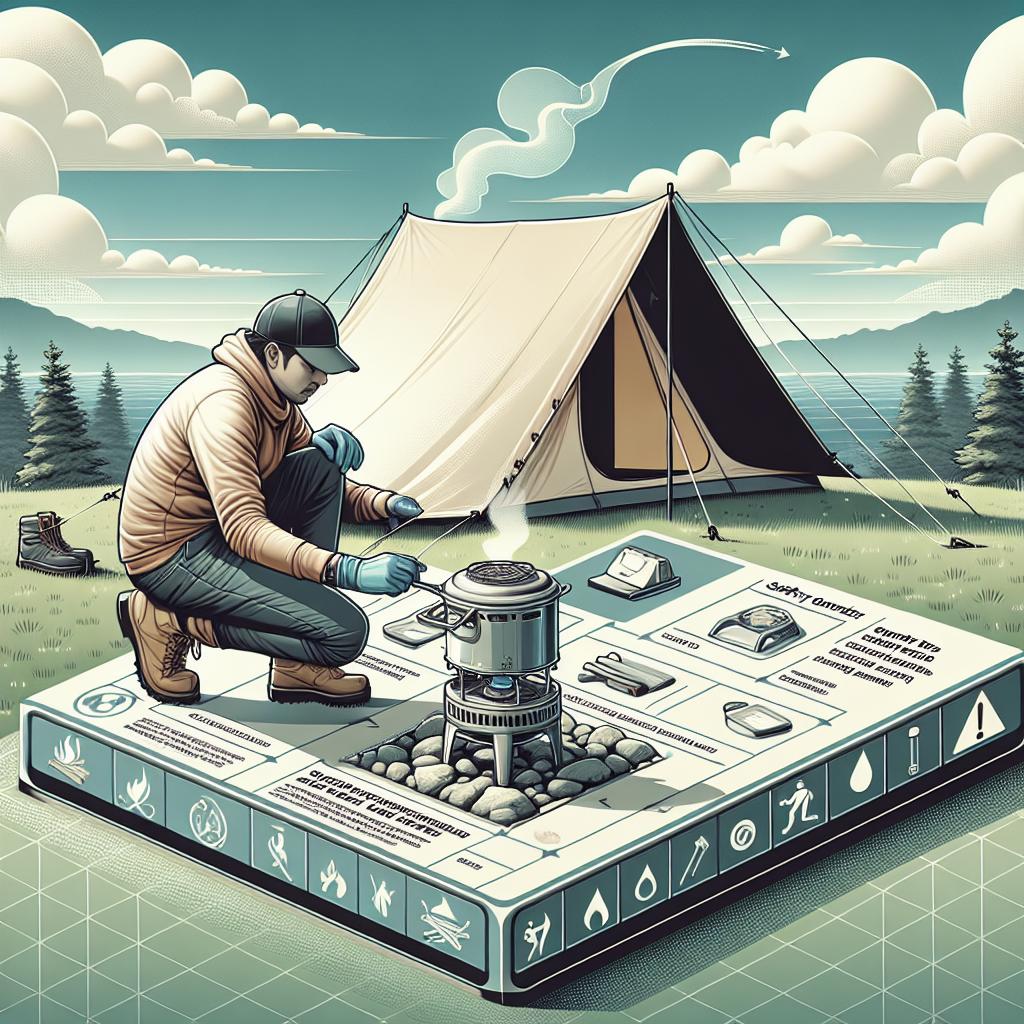<>
### How to Set Up a Tent Stove Safely Setting up a tent stove safely is essential for anyone planning a cozy and warm outdoor camping experience. Proper installation not only keeps you warm but also ensures your safety by preventing accidents such as carbon monoxide poisoning or fire hazards. This blog post will guide you through common wood stove mistakes that you can easily avoid, the benefits of using a wood-burning stove in your canvas tent, choosing the right wood-burning stove, and how to install it correctly. We will also cover frequently asked questions to address any additional concerns you may have.
4 Preventable Wood Stove Mistakes
Mistake 1: Improper Ventilation One of the most critical mistakes when setting up a tent stove is neglecting adequate ventilation. Poor ventilation can lead to dangerous levels of carbon monoxide inside the tent, which is a colorless and odorless gas that can be fatal. Always ensure your tent has vents specifically designed for stove use and keep them open while the stove is in operation. Mistake 2: Incorrect Stove Placement Placing your stove too close to tent walls or flammable materials is another common mistake. This can quickly turn into a fire hazard. Make sure the stove is set up in a central location away from the tent walls and use a heat-resistant mat underneath it. Preferably, the stove should be placed in a corner with a protective shield. Mistake 3: Using Wet or Green Wood Using wet or green wood in your stove generates more smoke and leads to bad combustion. This can cause creosote build-up in your stove pipe, increasing the chances of a chimney fire. Use dry, seasoned wood for efficient burning and minimal smoke. Mistake 4: Neglecting Regular Maintenance Stoves and chimneys need regular cleaning and maintenance to function correctly. Ignoring this can reduce the stove’s efficiency or even lead to dangerous blockages. Make it a habit to clean your chimney and stove pipe before each trip and periodically during extended usage.
Why use a wood-burning stove in your canvas tent?
Comfort and Warmth A wood-burning stove adds both comfort and warmth to your camping experience. Unlike other heating options, a wood stove provides consistent and reliable heat that can keep your canvas tent warm even in freezing temperatures. The radiant heat from the stove creates a cozy ambiance, making your tent feel like a home away from home. Cooking Abilities Another advantage of using a wood-burning stove is its dual functionality. Not only does it heat your tent, but you can also use it for cooking meals. This means fewer appliances to carry and a more streamlined packing list. Prepare hot meals and beverages while enjoying the warmth from your stove, making outdoor dining both practical and delightful.
What kind of wood-burning stove should you use?
Traditional Cast Iron Stoves Traditional cast iron stoves are durable and retain heat for extended periods. However, they are heavy and may not be the best option if you’re backpacking or hiking to your campsite. They are ideal for more permanent or semi-permanent setups, where the extra weight is less of an issue. Portable Titanium Stoves For those who need a lighter, more portable option, titanium stoves are an excellent choice. They are significantly lighter than their cast iron counterparts and have minimal impact on your overall pack weight. Despite being lightweight, titanium stoves are robust and can handle the rigors of frequent use. Alcohol and Kerosene Stoves While less popular than wood-burning options, alcohol and kerosene stoves can be convenient for those who may not have access to dry wood. These stoves require specific fuels and are generally easier to ignite, but they don’t provide the same ambiance and heat levels as wood stoves.
How to install a wood-burning stove in your canvas tent
Step 1: Choose the Right Location Select a location within your tent that is central yet away from walls and other flammable materials. Ensure you have a flat and stable surface to place the stove and use a heat-resistant mat to protect the tent floor. Step 2: Set Up the Stove Jack A stove jack is a fireproof exit point for your stove pipe, usually installed in the tent’s roof. Follow the manufacturer’s instructions to properly cut and install the stove jack. Ensure it is securely fastened to prevent any movement or leaks that could pose a fire risk. Step 3: Assemble and Connect the Stove Pipe Connect the stove pipe sections according to the stove manufacturer’s guidelines. Ensure each section is securely fastened to avoid any disconnections during use. The pipe should extend above the tent to ensure proper ventilation and to keep smoke from accumulating inside. Step 4: Test for Safety Before lighting your stove, double-check all connections and setups. Ensure the stove is stable, the stove pipe is secure, and there is clear venting. Light a small fire to test the system and check for any smoke leaks or ventilation issues.
FAQs
Can I use any type of wood in my tent stove? No, it’s essential to use dry, seasoned hardwood for efficient burning and minimal smoke. Avoid using wet or green wood, as it can lead to poor combustion and creosote build-up in the stove pipe. Is it safe to leave a wood-burning stove unattended? Leaving a wood-burning stove unattended is not advisable. Always monitor the stove while in use and ensure it’s completely extinguished before leaving the tent or going to sleep. Do I need special insurance for using a wood stove in my tent? Some camping locations and insurance policies may require specific precautions or additional coverage when using a wood stove in a tent. Check with your insurance provider and the campsite’s regulations beforehand.
Final Thoughts
Setting up a tent stove safely involves careful planning and adherence to safety guidelines. By understanding common mistakes, knowing the benefits, choosing the right stove, and following proper installation steps, you can ensure a warm and safe camping experience. Below is a summary table of key points from this article. “`
| Section | Key Points |
|---|---|
| 4 Preventable Wood Stove Mistakes | Adequate ventilation, correct stove placement, using dry wood, regular maintenance |
| Why use a wood-burning stove in your canvas tent? | Comfort and warmth, cooking abilities |
| What kind of wood-burning stove should you use? | Traditional cast iron, portable titanium, alcohol and kerosene stoves |
| How to install a wood-burning stove in your canvas tent | Choose location, set up stove jack, assemble stove pipe, safety test |
| FAQs | Type of wood, leaving stove unattended, insurance requirements |
“` By following these guidelines and tips, you can enjoy the comforts of a wood-burning stove in your canvas tent while ensuring the safety of yourself and others. Happy camping!


